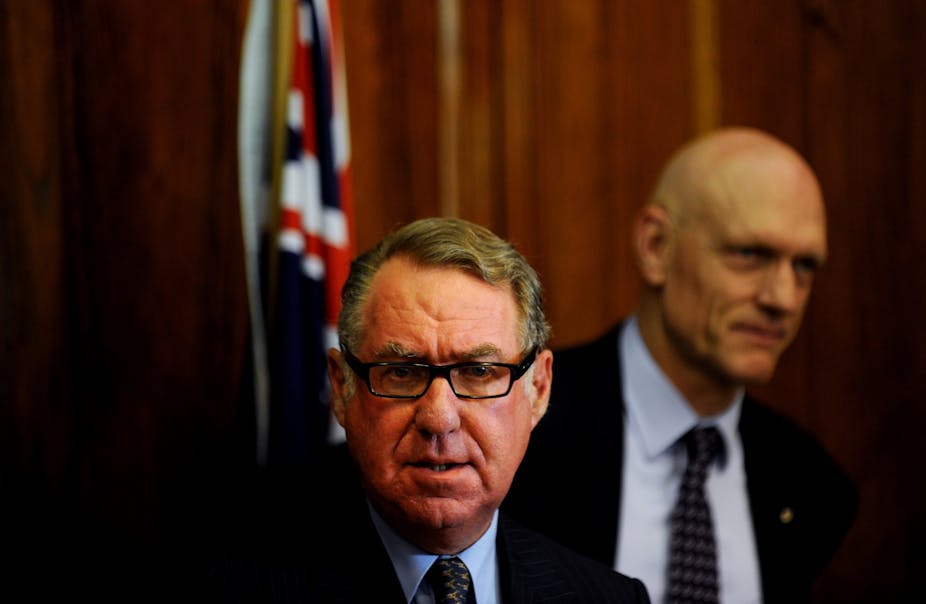Every school student in Australia would be allocated enough needs-based funding to be educated to a national standard, under a landmark proposal to pump an additional $5 billion of government money into schools annually.
Following the largest review of school funding in almost 40 years, the Gonski report - handed down today - has recommended that 75% of the extra money be spent on state schools, which are responsible for 66% of students.
Under the model proposed in the report, students would receive a “schools resources standard” (SRS) in government funding that would be made up of two components: a base payment, and - for those with greater need, including indigenous students, students with low English proficiency, disabled students, students from a low socio-economic background and students from remote areas - an additional loading.
At the launch of the report, Sydney businessman David Gonski said that the system was “transparent, equitable and financially sustainable. It is also effective in providing an excellent education for all Australian students”.
Governments would contribute the entire SRS funding for government schools. Schools in the non-government sector, however, would receive funding based on “the anticipated level of their private contribution”, which - at least initially - would be based on a socio-economic status score, Mr Gonski said. At the very least they would receive a 20-25 per cent contribution per student.
The recommended $5 billion increase in funding is based on 2009 figures, the most recent available to Mr Gonski’s review panel. It would represent a 15% increase in recurrent funding across all levels of government for that year. The amount needed by 2014, the earliest date at which the system could be adopted, would be much higher.
But both the Prime Minister, Julia Gillard, and the Minister for School Education, Peter Garrett, pointedly refused to commit to a vast outlay on schools. Mr Garrett stressed this morning that the priority for the government was “to bring the budget back in to surplus … I think that’s the most important thing that we can do at this point in time”.
Ms Gillard added: “We have to ensure that we work through these issues mindful of budget sustainability … we need to make sure that any new funding model is sustainable over time and fits within government budgets.”
Instead, the government has assigned School Education parliamentary secretary Jacinta Collins to work with the philanthropic sector to raise funding.
The call for more money sits at odds with a report released last week by the Grattan Institute, which made the argument that only improvements in teacher training - and not increased funding - could arrest Australia’s recent slide in international numeracy and literacy rankings.
“Australia’s schooling performance has slipped over the last decade and is at serious risk in our opinion of continuing to slide further,” acknowledged Mr Gonski.
“The report says that differences in educational outcomes must not be the result of differences in wealth, income, power or possessions. There is growing evidence that an increase of concentration of disadvantaged students in a school has an impact on educational outcomes. This finding is significant because it has informed the development of the loadings component of our schooling resource standard, which is the key to the new funding framework.”
In 2009, only 56% of students from low socio-economic backgrounds completed high school, compared with 75% of children from high socio-economic backgrounds.
The review canvassed more than 7,000 submissions over 18 months. But the wait is far from over for public education advocates anxious to see an overhaul of the current system, widely regarded as inconsistent and inequitable, even by key figures in the independent education sector. The Education Minister, Peter Garrett, said that the Government would undertake a “nationwide grassroots discussion” before taking any action.
Prime Minister Gillard today insisted that the report was designed to provide greater opportunities in education to all students, regardless of whether they attended government, private or independent schools.
“We haven’t looked at school sectors, we’ve looked at every child in every school … our focus will be on all schools,” the Prime Minister said.
Labor has made a concerted attempt to shake off the “class warfare” accusations that have dogged the party since former leader Mark Latham announced a plan to slash funding to 67 of Australia’s wealthiest private schools.
The plan would have overhauled the model introduced by the Howard government in 2001, under which the amount of federal funding given to non-government schools depends on the socio-economic status of the areas in which students live.
Owing to a promise by the Howard government that no school would be worse off when the system came in, it agreed to preserve and index the entitlements that more than 1075 schools received under the previous system. As a result, two schools in similar communities can receive amounts that differ in the magnitude of several thousand dollars per student, because one existed before 2001 while the other did not.

